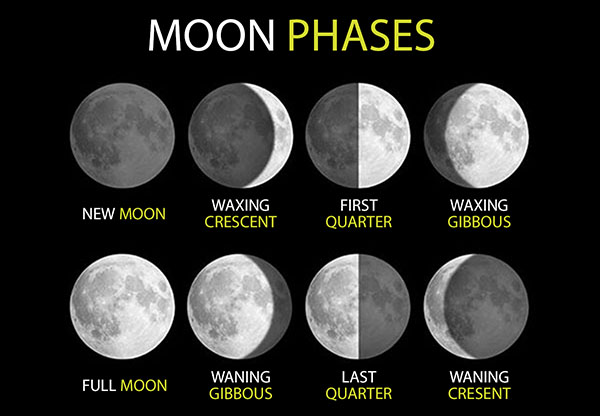The Moon
One Small Step….
The Moon is our nearest neighbour in space. Its gravitational pull controls our tides and the amount of the illuminated surface we can see changes as the Moon moves round the Earth and gives us the lunar phases. It takes the Moon about about 29.5 days to orbit the Earth. The Moon’s rotation keeps pace with its orbit round the Earth, which means that we only ever see one side – the Near Side – of the Moon.
Our months are based on this 29.5 day lunar cycle – or a moonth (which is where the word “month” comes from)!

The Moon generates no light of its own; it shines only by reflected sunlight. Although the light reflecting from a full moon may obscure our view of the stars, its crater marked surface & lava “seas” are fascinating to look at with binoculars and a great starting point for budding astronomers. A Full Moon is also an ideal time to practice using our natural night vision skills as the light reflected is so bright, it can help us see our surroundings at nighttime. At Full Moon it is even bright enough to read a paperback book by!
Activity – Why not start a Moon Diary?! Check out our Moon Log template for recording your lunar observations every day for a month.

Instructions: Write the date and time of our observation and draw how the Moon looks by shading in the circles to represent the shape of the Moon. For example – if you see half of the Moon, shade the side you cannot see in the circle. If it is too cloudy to view the Moon, make a note of this in your diary.
You can continue this type of journal as you learn about viewing the stars in the night sky.
